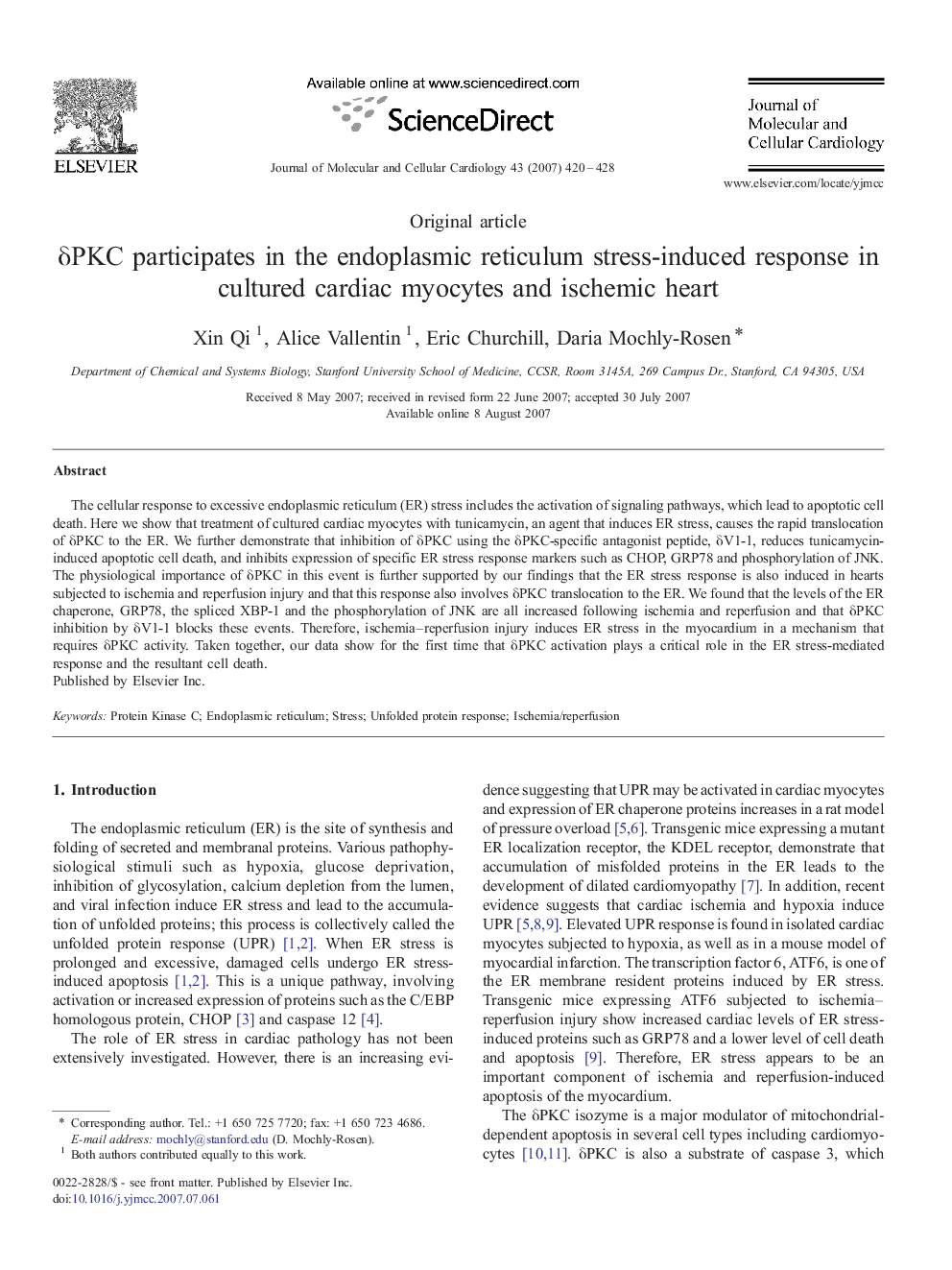| Article ID | Journal | Published Year | Pages | File Type |
|---|---|---|---|---|
| 2191923 | Journal of Molecular and Cellular Cardiology | 2007 | 9 Pages |
The cellular response to excessive endoplasmic reticulum (ER) stress includes the activation of signaling pathways, which lead to apoptotic cell death. Here we show that treatment of cultured cardiac myocytes with tunicamycin, an agent that induces ER stress, causes the rapid translocation of δPKC to the ER. We further demonstrate that inhibition of δPKC using the δPKC-specific antagonist peptide, δV1-1, reduces tunicamycin-induced apoptotic cell death, and inhibits expression of specific ER stress response markers such as CHOP, GRP78 and phosphorylation of JNK. The physiological importance of δPKC in this event is further supported by our findings that the ER stress response is also induced in hearts subjected to ischemia and reperfusion injury and that this response also involves δPKC translocation to the ER. We found that the levels of the ER chaperone, GRP78, the spliced XBP-1 and the phosphorylation of JNK are all increased following ischemia and reperfusion and that δPKC inhibition by δV1-1 blocks these events. Therefore, ischemia–reperfusion injury induces ER stress in the myocardium in a mechanism that requires δPKC activity. Taken together, our data show for the first time that δPKC activation plays a critical role in the ER stress-mediated response and the resultant cell death.
